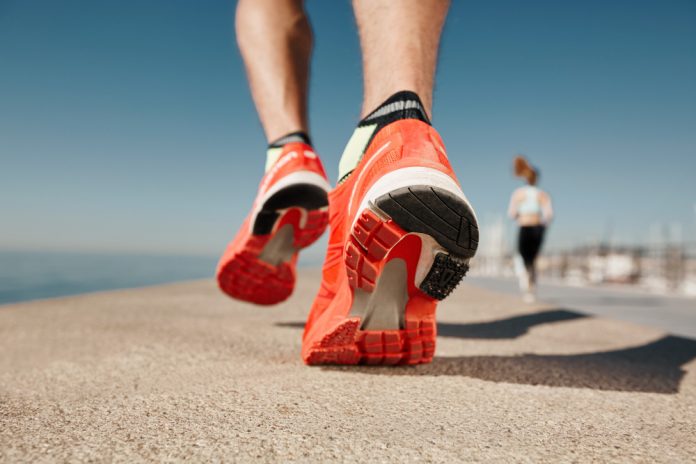Key Takeaway: Incorporating a stiff carbon-fiber plate into cushioning foams delivers a spring-like effect, improving running economy by up to 4%, reducing muscle fatigue, and optimizing biomechanics—making carbon-plated shoes a game changer for both elite and recreational runners.
Evolution of “Super Shoes”
The “super shoe” era began with Nike’s Vaporfly models in 2017, combining ultra-responsive foams with embedded carbon plates to eke marginal gains for marathon runners. Since then, major brands have raced to refine plate geometry, foam formulations, and stack heights within World Athletics’ 40 mm limit, democratizing performance benefits across distances from 5 km to ultramarathons.
How Carbon Plates Work
At the core of these shoes, the carbon-fiber plate serves multiple functions:
- Enhanced Energy Return: As the midsole compresses under load, the plate flexes and then snaps back during toe-off, returning stored energy and boosting forward propulsion.
- Optimized Ankle Mechanics: The plate’s curved shape smooths the heel-to-toe rollover, reducing ankle dorsiflexion and calf workload, which delays muscle fatigue.
- Reduced Metatarsophalangeal Flexion: By stiffening the forefoot, carbon plates prevent excessive big-toe bending, conserving energy at the toe-off phase.
Together, these effects translate to a measurable 4% improvement in running economy, meaning runners use less oxygen for a given pace.
Biomechanical Impacts and Research Findings
- A 2019 Sports Medicine review confirmed that carbon-plated shoes improve oxygen efficiency by 2–4% compared to standard racing flats.
- A 2025 ECU study measured a 4% increase in efficiency, correlating with reduced metabolic cost at submaximal speeds.
- However, a 2025 meta-analysis noted variability: while most runners gained efficiency, 20% showed no benefit or slight decrements, highlighting individual biomechanics and running style as critical factors.
Moreover, research into plate shape demonstrates that curved plates decrease hip and knee contact angles post-fatigue, potentially lowering injury risk by stabilizing joint mechanics under stress.
Who Benefits Most?
Elite Athletes
Professional marathoners enjoy the largest absolute gains, shaving 2–4 minutes off marathon times thanks to super-light carbon plates paired with novel “super foams” such as Nike ZoomX or PUMA Nitro Foam Elite.
Recreational and Mid-Packer Runners
While improvements are smaller, many amateur runners still experience 1–2% gains (e.g., 30–90 seconds on a marathon), valuable margins for personal bests. Those with neutral footstrike patterns tend to benefit most, whereas overpronators may see diminished returns due to altered load distribution.
Short-Distance Racers
Despite initial emphasis on marathons, carbon-plated shoes demonstrate benefits in 5 km and 10 km events. The rapid energy return and stability aid quick turnover and higher sustainable paces, making them suitable for track and road races alike.
Potential Drawbacks and Considerations
- Cost: Premium carbon-plated models range from $250–$300, representing a significant investment.
- Durability: High stack heights and soft foams compress faster; many super shoes lose peak performance after 200–300 km of use.
- Injury Risk: Stiffer plates can alter gait mechanics; runners transitioning too rapidly may experience discomfort in calves or Achilles.
- Regulation Compliance: Shoes must adhere to World Athletics’ regulations—stack height ≤40 mm and only one rigid plate per shoe—to remain race-legal.
Top Carbon-Plated Models of 2025
| Model | Foam Technology | Stack Height | Notable Plate Design |
| Nike Alphafly 3 | ZoomX + Air Pods | 38/33 mm | Dual forefoot pods + full-length FlyPlate |
| PUMA Fast-R Nitro Elite 3 | Nitro Foam Elite | 40 mm | Extended PWRPLATE curvature |
| Asics Metaspeed Sky Tokyo | FF Blast Turbo | 39 mm | S-shaped plate optimized for speed |
| Saucony Endorphin Elite 2 | PWRRUN PB | 38 mm | Pebax® SPEEDROLL plate |
| New Balance FuelCell SuperComp Elite V5 | FuelCell PB ELITE | 40 mm | Integrated curved plate |
Selecting the Right Super Shoe
- Determine Your Goal Pace: Faster race paces warrant aggressive plate stiffness and rocker geometry.
- Assess Biomechanics: Neutral strikers gain most; overpronators should test for stability and pronation control.
- Prioritize Durability vs. Performance: Higher stack foams feel bouncier but compress sooner.
- Fit and Comfort: Plate position and midsole firmness vary—try models to gauge toe-off feel and underfoot support.
- Budget Considerations: Entry-level super shoes offer many benefits at slightly reduced performance vs. flagship models.
Conclusion
Carbon-plated running shoes have reshaped endurance sport, delivering scientifically validated efficiency gains that benefit a diverse spectrum of runners. While not a panacea, their energy-return mechanisms, optimized biomechanics, and advanced foams offer transformative performance when paired with appropriate training and gait analysis. As research continues to refine plate shapes and foam chemistries, these “super shoes” will maintain their status at the forefront of running innovation.















